
In the textual criticism of the New Testament, the Byzantine text-type is one of the main text types. It is the form found in the largest number of surviving manuscripts of the Greek New Testament. The New Testament text of the Eastern Orthodox Church, the Patriarchal Text, as well as those utilized in the lectionaries, are based on this text-type. Similarly, the Aramaic Peshitta which often conforms to the Byzantine text is used as the standard version in the Syriac tradition, including the Syriac Orthodox Church and the Chaldean church. Whilst varying in at least 1,830 places, it also underlies the Textus Receptus Greek text used for most Reformation-era (Protestant) translations of the New Testament into vernacular languages. Modern translations mainly use eclectic editions that conform more often to the Alexandrian text-type, which is viewed as the most accurate text-type by most scholars, although some modern translations that use the Byzantine text-type have been created.

Textus Receptus refers to the succession of printed editions of the Greek New Testament from Erasmus's Novum Instrumentum omne (1516) to the 1633 Elzevir edition.
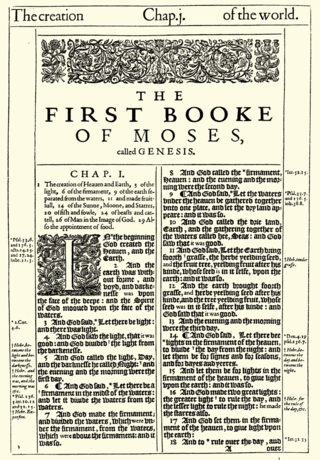
The King James Only movement asserts the belief that the King James Version (KJV) of the Bible is superior to all other translations of the Bible. Adherents of the King James Only movement, mostly members of Conservative Anabaptist, traditionalist Anglo-Catholics, Conservative Holiness Methodist and some Baptist churches, believe that the KJV needs no further improvements because it is the greatest English translation of the Bible which was ever published, and they also believe that all other English translations of the Bible which were published after the KJV was published are corrupt.
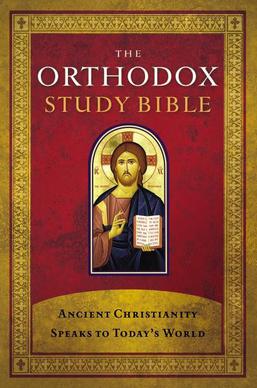
The Orthodox Study Bible (OSB) is an Eastern Orthodox study Bible published by Thomas Nelson in 2008 featuring an English translation of the Septuagint by St. Athanasius Academy for the Old Testament and utilizing the New King James Version (NKJV) for the New Testament.
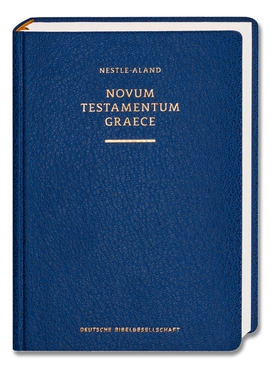
Novum Testamentum Graece is a critical edition of the New Testament in its original Koine Greek, forming the basis of most modern Bible translations and biblical criticism. It is also known as the Nestle–Aland edition after its most influential editors, Eberhard Nestle and Kurt Aland. The text, edited by the Institute for New Testament Textual Research, is currently in its 28th edition, abbreviated NA28.
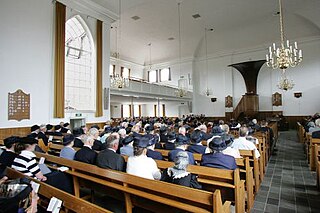
Reformed fundamentalism arose in some conservative Presbyterian, Congregationalist, Reformed Anglican, Reformed Baptist, Non-denominational and other Reformed churches, which agrees with the motives and aims of broader evangelical Protestant fundamentalism. The movement was historically defined by a repudiation of liberal and modernist theology, the publication (1905–1915) entitled, The Fundamentals, and had the intent to progress and revitalise evangelical Protestantism in predominantly English-speaking Protestant countries, as well as to reform separated churches according to the Bible, historic expression of faith and the principles of the Reformation. The Fundamentalist–Modernist controversy, and the Downgrade controversy, kindled the growth and development of reformed fundamentalism in the United States and the United Kingdom. Reformed fundamentalists have laid greater emphasis on historic confessions of faith, such as the Westminster Confession of Faith.

Frederick Henry Ambrose Scrivener was a New Testament textual critic and a member of the English New Testament Revision Committee which produced the Revised Version of the Bible. He was prebendary of Exeter, and vicar of Hendon.
There have been various debates concerning the proper family of biblical manuscripts and translation techniques that should be used to translate the Bible into other languages. Biblical translation has been employed since the first translations were made from the Hebrew Bible into Greek and Aramaic. Until the Late Middle Ages, the Western Church used the Latin Vulgate almost entirely while the Eastern Church, centered in Constantinople, mostly used the Greek Byzantine text. Beginning in the 14th century, there have been increasing numbers of vernacular translations into various languages. With the development of modern printing techniques, these increased enormously.

Matthew 15 is the fifteenth chapter in the Gospel of Matthew in the New Testament section of the Christian Bible. It concludes the narrative about Jesus' ministry in Galilee and can be divided into the following subsections:

Matthew 19 is the nineteenth chapter in the Gospel of Matthew in the New Testament section of the Christian Bible. The book containing this chapter is anonymous, but early Christian tradition uniformly affirmed that Matthew composed this Gospel. Jesus commences his final journey to Jerusalem in this chapter, ministering through Perea. It can be seen as the starting point for the passion narrative.
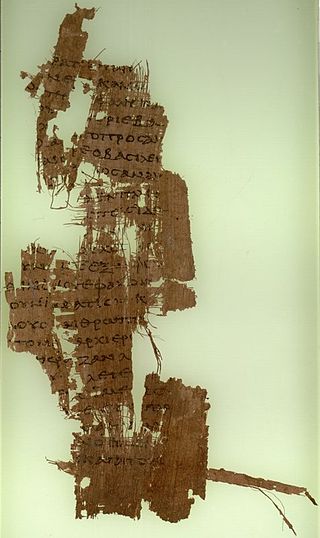
John 19 is the nineteenth chapter of the Gospel of John in the New Testament of the Christian Bible. The book containing this chapter is anonymous, but early Christian tradition uniformly affirmed that John composed this Gospel. This chapter records the events on the day of the crucifixion of Jesus, until his burial.

Luke 23 is the twenty-third chapter of the Gospel of Luke in the New Testament of the Christian Bible. The book containing this chapter is anonymous, but early Christian tradition uniformly affirmed that Luke the Evangelist composed this Gospel as well as the Acts of the Apostles. This chapter records the trial of Jesus Christ before Pontius Pilate, Jesus' meeting with Herod Antipas, and his crucifixion, death and burial.
Olive Tree Bible Software creates Biblical software and mobile apps, and is an electronic publisher of Bible versions, study tools, Bible study tools, and Christian eBooks for mobile, tablet, and desktop devices. The firm is headquartered in Spokane, Washington and is a member of the Evangelical Christian Publishers Association (ECPA). Olive Tree currently supports Android, iPad, iPhone, Macintosh, Windows, and personal computer devices.
Our Authorized Bible Vindicated is a book written by Seventh-day Adventist scholar Benjamin G. Wilkinson advocating the King James Only (KJO) position, published in 1930. It asserted that some of the new versions of the Bible coming out, came from manuscripts with corruptions introduced into the Septuagint with additional texts, which came to be called "Apocrypha", and manuscripts with deletions and changes from corrupted Alexandrian text brought in by manuscript readings in the Greek New Testament adopted by Brooke Foss Westcott and Fenton John Anthony Hort. While King-James-Only advocacy existed prior to the writing of this book, many of the arguments in the book have since become set talking-points of many who support the belief, thanks in large part to Baptist Fundamentalist preacher David Otis Fuller, who adopted them into much of his own material, such as the book, Which Bible?.
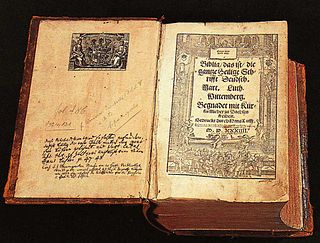
A Protestant Bible is a Christian Bible whose translation or revision was produced by Protestant Christians. Typically translated into a vernacular language, such Bibles comprise 39 books of the Old Testament and 27 books of the New Testament, for a total of 66 books. Some Protestants use Bibles which also include 14 additional books in a section known as the Apocrypha bringing the total to 80 books. This is in contrast with the 73 books of the Catholic Bible, which includes seven deuterocanonical books as a part of the Old Testament. The division between protocanonical and deuterocanonical books is not accepted by all Protestants who simply view books as being canonical or not and therefore classify books found in the Deuterocanon, along with other books, as part of the Apocrypha. Sometimes the term "Protestant Bible" is simply used as a shorthand for a bible which contains only the 66 books of the Old and New Testaments.

Revelation 12 is the twelfth chapter of the Book of Revelation or the Apocalypse of John in the New Testament of the Christian Bible. The book is traditionally attributed to John the Apostle, but the precise identity of the author remains a point of academic debate. This chapter contains the accounts about the woman, the dragon, and the child, followed by the war between Michael and the dragon, then the appearance of the monster from the sea. William Robertson Nicoll, a Scottish Free Church minister, suggests that in this chapter the writer has created a Christianised version of a Jewish source which "described the birth of the Messiah in terms borrowed from ... cosmological myths [such as] that of the conflict between the sun-god and the dragon of darkness and the deep".
The Bible-Presbyterian Church ("BPC") was a conservative reformed denomination in Singapore. It existed from 1955 to 1988, following the history of the country, as the Bible-Presbyterian Church of Malaya, then the Bible-Presbyterian Church of Singapore and Malaysia, and finally the Bible Presbyterian Church of Singapore ("BPCOS") before the BPCOS dissolved in 1988. Since that time, Bible-Presbyterian churches in Singapore have continued to exist separately. The B-P movement grew out of the Bible Presbyterian Church in the United States. As of 2009, there were 20,000 members in 32 B–P churches in Singapore. The number of B-P churches in Singapore has grown to forty-three as of 2020/21.
The Literal English Version of Scripture (LEV) is a translation of the Bible based on the World English Bible. Formerly known as the "Shem Qadosh Version", the title was officially changed in November 2016. It is considered a Sacred Name Bible rendering the name of God using the Hebrew characters יהוה, and that of Jesus in Hebrew as ישוע. It was created by a team of volunteers across the United States with additional proofing and editing assistance by individuals in Poland and Taiwan. Footnotes and appendices were written by the General Editor, J. A. Brown.

The Modern English Version (MEV) is an English translation of the Bible begun in 2005 and completed in 2014. The work was edited by James F. Linzey, and is an update of the King James Version (KJV), re-translated from the Masoretic Text and the Textus Receptus.













